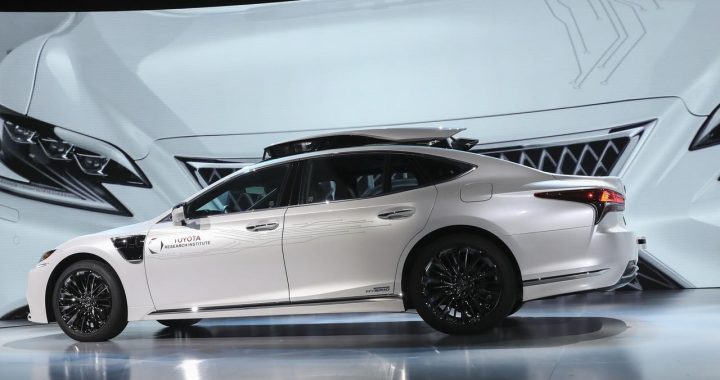Car-to-car communication is one of the tools the industry is developing to convince us about the safety of driverless and semi-driverless technology.
The world’s biggest consumer technology show in Las Vegas, CES, is swarming with concept driverless vehicles of the future, with appealing and innovative designs.
The big carmakers including Toyota used the 2019 Consumer Electronics Show to outline their initiatives focused on the future of automotive technology, but it’s the work of companies such as chip maker Qualcomm, graphics firm Nvidia, Dutch navigation software companies TomTom and AR, and tech firms such as WayRay that’s proving really interesting.
If Qualcomm has its way, our road system will increasingly use car-to-car communications to prevent accidents. Its C-V2X (cellular vehicle to everything) platform is one of several it has promoted at the show and defines a new level of co-operation between travelling vehicles.
For example, consider a car fitted with V2X technology that brakes heavily in front of a large semi-trailer, and a third car with V2X behind that.
A front-to-rear collision is likely if the third car can’t see the first. However, the car with the V2X technology would broadcast to nearby vehicles that it was stopping suddenly and the third car would then brake quickly.
The technology lets cars co-operate should one want to change lanes — it would be aware of the speed and position of cars beside it and through V2X the cars would adjust their speeds for a smoother transition. Blind-spot warning is another application.
This is not pie-in-the-sky stuff. Qualcomm and the City of Las Vegas have agreed to test the technology.
V2X not only applies to cars. It can be fitted at traffic signals and cars can receive wireless confirmation of changes to traffic signals. They can also be made aware of pedestrians intending to cross at the intersection or around the corner from it.
The V2X system uses cameras and object recognition to detect pedestrians and other obstacles affecting traffic flow.
With 5G looming, the management of traffic will involve a huge amount of data transfer between vehicles and between vehicles and centralised traffic management systems and it seems we’re on the cusp of this age.
TomTom, meanwhile, has developed a system that can glean massive amounts of data from traffic in real time and then use it to aid traffic management.
At CES, a representative told The Weekend Australian the company already had access to data from about 10 to 15 per cent of cars on the road. Data can be gleaned from all aspects of a car’s operation through the use of embedded modems.
For example, the use of windscreen wipers by several cars in a particular spot can signal a local rain warning sent to other cars. Data gleaned from car axles can be used to identify poor sections of roads. Information can also be shared with local authorities.
The ability of millions of cars to contribute data about road conditions, roadside objects and obstacles and share it transforms what was once the simple concept of GPS navigation.
Since 2016, TomTom has partnered with Nvidia to develop an HD mapping system for autonomous cars, and there are plenty of video examples of roads with detailed embellishments of lanes and other roadside objects.
A deep knowledge of roadways and lanes offers a clearer depiction of where cars are going with the system showing lane guides in poor weather conditions and at night. This is usually shown on a panel on the dash, but at CES there are companies building large head-up displays on windscreens with these digital embellishments superimposed over the visual road.
Swiss holographic augmented reality technologies firm WayRay has worked with Hyundai Motor Group to build a large laser projection HUD system that tries to exactly match the vision ahead with embellished details. It was demonstrated in a Genesis G80 sedan.
At CES it announced it was making its True AR Software Development Kit (SDK) available to developers wanting to integrate virtual objects into the real world.
All of this: car-to-car communication and the massive gleaning and sharing of data between vehicles is seen as feasible in the early 2020s as new cars adopt this communications technology and 5G.
But there seems agreement that the age of having just autonomous cars on the roads is decades away. A panel at CES on autonomous/smart vehicles, safety and policy suggested that legislators may have to prepare for a period of maybe 50 years or more where self-drive and traditional cars mix it together and frame laws around that. That’s a challenge in itself.
Chris Griffith is attending CES in Las Vegas courtesy of Hisense Australia. Published in The Australian newspaper.
